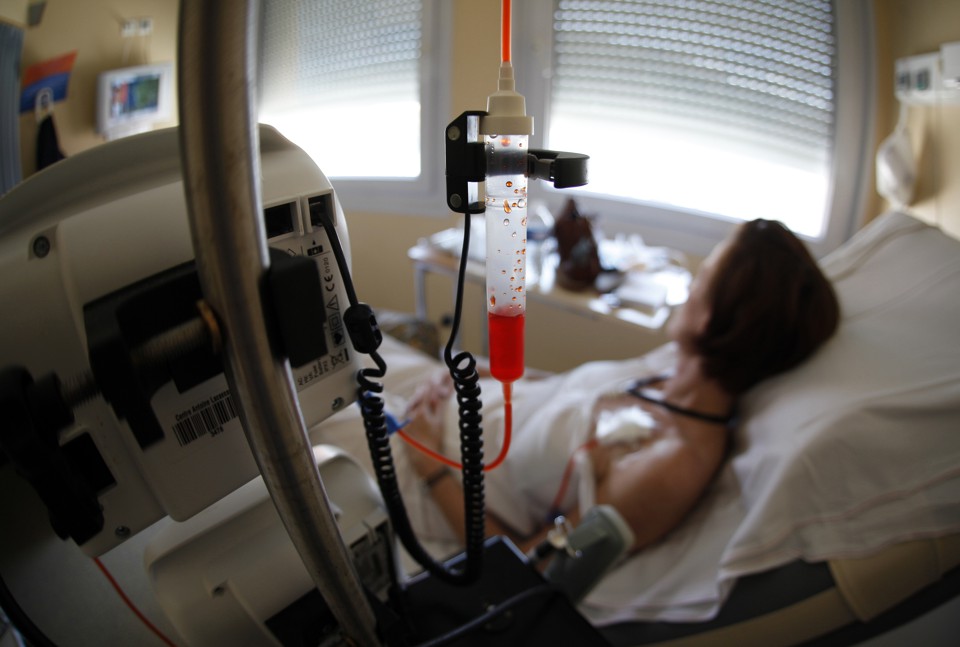
A couple years ago, Sibel Blau, an oncologist outside of Seattle, was working with the company Guardant Health to test their novel “liquid biopsies” in patients. The idea behind liquid biopsies is both elegant and promising. A doctor takes a blood sample from a patient, and then Guardant looks for tumor DNA floating in the blood, allowing doctors to identify the tumor’s unique mutations and offer a personalized drug regimen—all without an invasive tissue biopsy. Blau was excited to be on board.
When that study wrapped up, Blau still had Guardant test kits left over, so she offered some to her patients at no cost to them. At this point, Blau was routinely ordering DNA sequencing of traditional tissue biopsies, so some patients got both tests. The tissue DNA test from Foundation Medicine was “routine” in her practice, but even that test had only become available in 2012. The field of cancer DNA has been changing fast.
But Blau’s patients who got both tests didn’t get more clarity—if anything, they often got more confusion. The two tests would pick up on different mutations in the same person. So the Foundation tissue-sequencing test might suggest two drugs targeted toward the mutations in the patient’s tumor, and the Guardant liquid biopsy a third based on different mutations in the same tumor. In a small study published today in JAMA Oncology, Blau and her colleagues found no overlap between the drugs the tests recommended in five out of eight patients.
The new study is very small, but it aligns with other recent work comparing tissue and liquid-biopsy sequencing results. A paper from Northwestern researchers in August looking at these same two tests, for example, found that more than half of the mutations identified by one test did not show up in the other. Another study looking at a few especially important mutations (for many kinds of cancers) found the tests agreed 70.3 percent or 88.1 percent or 93.1 percent of the time, depending on the mutation.
So which test do you believe? “There is no easy answer,” says Richard Schilsky, the chief medical officer of the American Society of Clinical Oncology. “Because nobody actually knows what is the truth in terms of what’s happening inside a person’s tumor throughout the body.” Tissue and liquid biopsies are two ways to look inside a tumor, and both views are incomplete in different ways. ASCO is currently developing guidelines for doctors on this exact topic.
A tissue biopsy is exactly what it sounds like: The doctor sticks a large needle into the tumor and physically removes a small chunk. Liquid biopsies are little more complicated. Dying tumor cells shed DNA fragments into the bloodstream. There’s very little of this circulating tumor DNA in the blood, but recent advances in DNA sequencing have made it much easier to find.
A major reason the two kinds of tests return different results is that even a tumor contains multitudes. One chunk may have cells with mutation A, while another chunk has cells with mutation B. It’s the luck of the needle draw. Liquid biopsies, on the other hand, can pick up DNA shed by all cancer cells—maybe even a nascent tumor in a different location—but not all cancer cells shed as much DNA. “With a tumor biopsy, it’s like you read the book cover to cover. With a liquid biopsy, you read an entire shelf of books, but you only read the dust jackets,” says Justin Odegaard, the senior medical director of Guardant Health.
Guardant thinks that the two kinds of tests are complementary. They tell you different things and the more you know the better. (Foundation Medicine declined to comment on the study.) And indeed, a cancer patient might very reasonably want to take both tests. But Guardant’s and Foundation’s tests both cost $5,800, and most insurance policies, including Medicare, do not cover them for most types of cancer.
In some cases, the advantage of liquid biopsies might be obvious—when the tumor is close to a major blood vessel or when blood cancer has spread to multiple sites. In many cases, though, the choice will not be clear. Medicine tends to have a bias toward the known quantity, and tissue biopsies are the current standard. Blau, for instance, thinks liquid biopsies “are not really ready for primetime.” When given conflicting information from the two tests, she tells her patients to prioritize the tissue biopsy results.
There is definitely an incentive to make liquid biopsies ready for prime time. The tests could be very lucrative. Since they’re so non-invasive, patients could get several liquid biopsies for weeks, months, or even years as their cancer progresses—compared to the one initial tissue biopsy. That would allow doctors to look out for new mutations in the cancer and adjust drug regimens as needed. Many companies are now in this space. Foundation has since come out with its own liquid-biopsy test, FoundationACT. (It’s also embroiled in a patent lawsuit with Guardant Health.) Grail, a spinoff from the DNA sequencing machine maker Illumina, is reportedly looking to raise an eye-popping $1.7 billion to test its own liquid-biopsy product. But for liquid biopsies to really enter primetime, insurance companies will have to start paying for them.
[“source-ndtv”]
